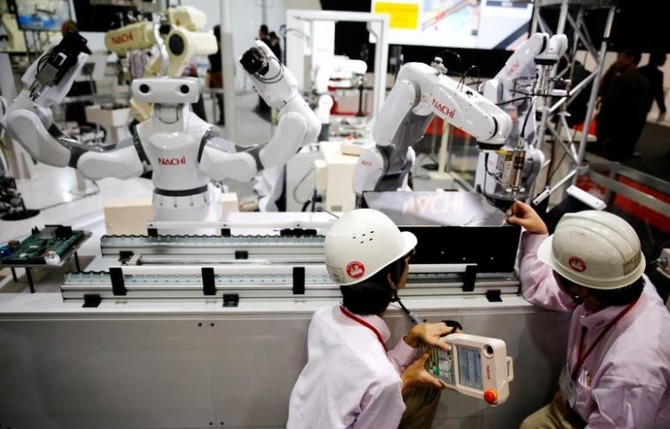As we navigate the transformative wave of automation, artificial intelligence (AI), and robotics, it’s essential for C-Suite, Board, and HR leaders to prepare, adapt, and proactively harness the opportunities it presents.
Here are eight key insights to help steer the helm through these challenging and exciting times.
- Understand the scale and immediacy of the automation trend: Recent studies forecast that a staggering 25% of jobs in the United States are highly susceptible to automation, potentially resulting in the loss of 73 million jobs over the next five years. Japan predicts nearly half of its workforce may be replaced by AI or robotic machines within the next two decades. The United Kingdom faces the risk of 30% of jobs being replaced by AI, impacting both male and female employment demographics. The scale and speed of these changes underline the immediate need for proactive and adaptive leadership.
- Recognise the value of uniquely human skills: As automation takes over routine and repetitive tasks, the value of uniquely human skills – emotional intelligence, creativity, problem-solving, and strategic thinking – increases exponentially. These are skills that machines, as of yet, cannot replicate.
- Promote upskilling for resilience: Encouraging a culture of continuous learning and providing avenues for upskilling within your organisation can not only safeguard jobs but also empower your workforce to take on more complex, creative, and strategic roles.
- Understand the concept of job transformation: Automation does not necessarily mean the complete elimination of jobs, but it often involves their transformation. Many jobs will evolve to integrate human skills with technological tools, creating new roles that we may not yet fully comprehend.
- Embrace change: Consider the intriguing case of the wine cork industry. Faced with the challenge of alternative wine closures, the industry didn’t cling to tradition. Instead, they sought new applications for cork, diversifying their product offerings beyond wine closures, successfully carving out new markets, and sustaining their relevance. This principle underlines the importance of embracing change and proactively seeking opportunities for growth and reinvention.
- Leverage automation for enhanced productivity: Consider how automation can be leveraged to enhance productivity within your organisation. By taking over routine tasks, automation can free up employee time, enabling them to focus on strategic, creative, and value-added roles.
- Leverage automation for improved employee experiences: Automation, when done right, can also greatly enhance employee experiences. For instance, automation in HR can simplify administrative tasks, thereby providing HR professionals with more time to focus on strategic initiatives like talent development, diversity and inclusion, and employee well-being.
- Foster a culture of continuous learning and adaptability: It’s crucial to create an organisational culture that values continuous learning and adaptability. Such a culture not only prepares employees for changes brought about by automation but also helps to cultivate a more engaged, innovative, and resilient workforce.
***
As we embrace these insights, the question becomes: how can we align technology with human potential to create a workforce that thrives amidst this changing landscape?
Leadership in the age of automation requires a deep understanding of the complex interplay between technology and humanity. It calls for the courage to envision and build a future where human potential is enhanced, not replaced, by technology.
It demands a commitment to fostering an organisational culture that values continuous learning, adaptability, and resilience.
By integrating these insights into our leadership approach, we can guide our organisations through the complexities and opportunities of the automation age. We can prepare our workforce for the future, driving not only organisational success but also societal progress. Automation is not a trend to be feared but a transformative force to be embraced.
It is an unprecedented opportunity to redefine the world of work, enhance productivity, and create more meaningful and fulfilling roles for our workforce.
Remember that leading through this transformative era is a journey. It requires agility, vision, and a commitment to cultivating an environment where continuous learning is not only encouraged but also celebrated.
It’s about viewing automation as an ally rather than an adversary and seeing the potential it holds for unlocking unprecedented levels of productivity, innovation, and employee satisfaction.
As leaders, we hold the keys to the future of work in our hands. The choices we make today will shape the workplaces of tomorrow, and our actions will determine whether our organisations merely survive or truly thrive in the age of automation. By embracing these eight key insights, we can lead with confidence and purpose, transforming challenges into opportunities and steering our organisations towards a future where technology and humanity go hand in hand.
While it might feel scary as we go through it, , let’s embrace this wave of automation, and together, we can reimagine the future of work.
Do you need help with supporting your employees?
Want to support your employees through restructures and redundancy with effective onboarding, stay interviews, offboarding and outplacement programs? Get in touch with me today to organise a 1-1 call to see how Career365 can support you and your team. Click here for more information.
Resources
Get advice delivered straight to your inbox as you look to support your team. Sign up to my Career Transition Tips newsletter designed for employers, managers and leaders to hear the latest insights on outplacement and offboarding.


